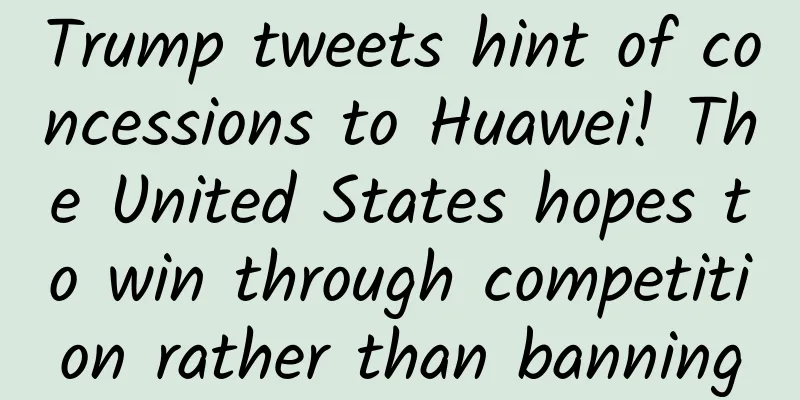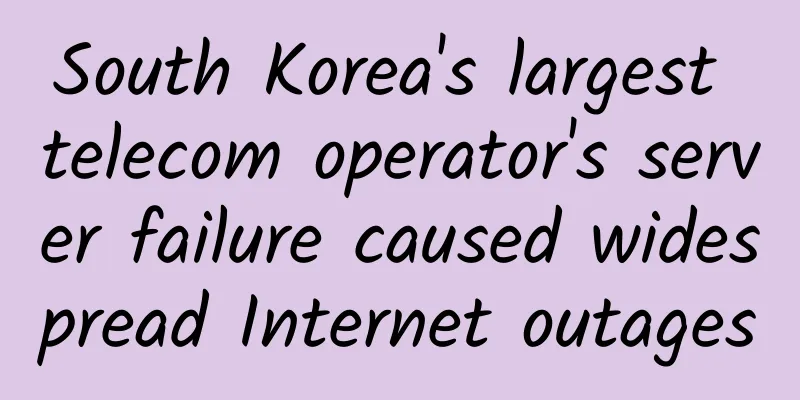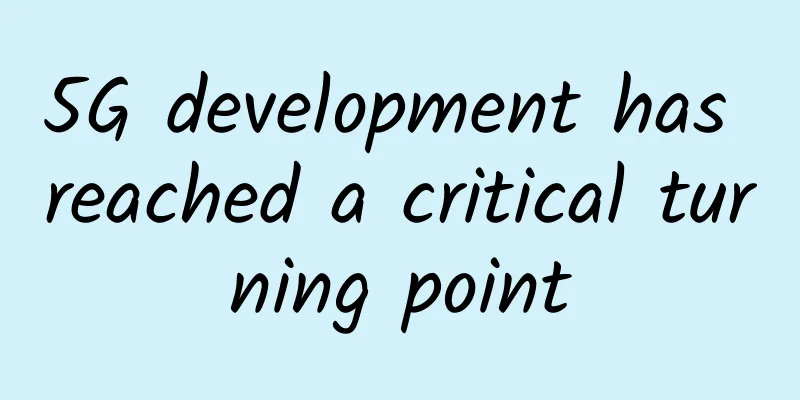Trump tweets hint of concessions to Huawei! The United States hopes to win through competition rather than banning

|
There may be a landmark turn in the U.S. stance toward Huawei.
Early on February 21, Trump suddenly posted two tweets in a row, emphasizing that the United States hopes to win through competition rather than preventing or banning currently more advanced technologies.
This statement immediately triggered a strong response from netizens. Although the tweet did not explicitly mention Chinese companies, the US media generally interpreted it as a sign that the Trump administration may take a more moderate stance on Huawei (and other Chinese communications/network equipment suppliers) in the future, or stop threatening to "completely ban" it. It is worth mentioning that shortly after Trump posted the tweet, Huawei's rotating chairman Hu Houkun also retweeted Trump's tweet and said:
The US strategy of banning Huawei may have failed Since the beginning of last year (2018), the US government has been using the banner of "national security" to make things difficult for Huawei. For example, preventing Huawei from having normal business cooperation with US companies:
For example, preventing US operators from using products provided by Chinese communications equipment manufacturers:
For example, they put on some false charges:
What is even more infuriating is that the United States has also used "coercion and inducement" on its allies, trying to persuade (warn) them to also ban Huawei equipment:
In the face of this "ban", Ren Zhengfei said in an exclusive interview with the BBC: "It is impossible for the United States to destroy Huawei. Even if the United States persuades more countries not to use our equipment for the time being, we can always reduce the scale of the impact a little bit and make it very small. If the lights go out in the West, the East will still shine. If the North gets dark, there is still the South. The United States cannot represent the world. The United States only represents part of the world."
Figure: Ren Zhengfei is interviewed (Source: BBC video) But the light of the West can never be extinguished. Just a few days ago, according to reports from multiple media outlets including TheVerge and The Financial Times, the UK National Cyber Security Center (NCSC) released a report after evaluation stating that the risks of using Huawei equipment in 5G networks are completely controllable and there is no need to completely ban it.
Although the relevant report has not yet been released, it may still have a huge impact on the attitudes and decisions of other countries. As a member of the "Five Eyes Alliance", the UK has the right to access sensitive intelligence shared by the other four countries - the United States, Canada, New Zealand and Australia. Its status is obviously higher than other European countries, and the decisions it makes are of greater reference significance.
CNN in the United States also believes that Britain's attitude may cause divisions in the Five Eyes Alliance consisting of the United States, Britain, Australia, New Zealand and Canada. If Britain, one of the core members of the alliance, gives the green light to Huawei, the US efforts to ban Huawei will fail. The US is underdeveloped in 5G In addition to hinting at a change in the U.S. stance on Huawei, well-known communications self-media outlet Netyou Mercenary stated in the article that Trump's tweet also highlighted the shortcomings of the United States in 5G development. Wang Youjun said that early 5G was based on 4G base stations as a thick network capacity layer. The density of 4G base stations determined the first-mover advantage of the 5G network. The density of 4G base stations in the United States is far lower than that in Japan, South Korea and China, which will cause the United States to lose at the starting line in 5G construction. Among the four major mobile operators in the United States, Verizon and AT&T's 5G construction is mainly based on the millimeter wave frequency band. The frequency band is high, the base station coverage is small, and it is only deployed in a point-like manner, making it difficult to form 5G large-scale coverage. At present, the merger of the two major operators T-Mobile and Sprint in the United States into New T-mobile is a major highlight of 5G in the United States. The two operators hope to complement each other's base stations and spectrum resources, and use the three-layer networking of low, medium and high frequency bands to build a 5G national network with wide coverage and high capacity. However, this "national 5G network with wide coverage and high capacity" will not be achieved overnight. New T-Mobile's goal is to achieve high-speed 5G network coverage of 293 million people in the United States by 2024. In fact, since last year, reports issued by many American institutions have warned about the United States’ lagging behind in 5G. A U.S. national report pointed out that if the United States does not speed up the introduction of 5G technology, it will have no chance in the future; the U.S. National Security Council also warned that if China dominates the communications field, they will not only achieve technological victory, but also political, economic and military victory; the report of the American Radio and Internet Association (CTIA) said that the United States should speed up the introduction of 5G technology, otherwise it may lag behind China by one to two years and will no longer have other opportunities in the future. On August 7 last year, a Deloitte report found that China currently has more than 10 times as many base stations supporting 5G communications as the United States. In just three months of 2017, Chinese mobile phone base station companies and operators added more base stations than the United States had in the previous three years. Since 2015, China has spent $24 billion more on 5G than the United States and has built 350,000 new wireless base stations, while the United States has built less than 30,000. The report also pointed out that the cost of installing the necessary equipment to transmit 5G in China may also be about 35% cheaper than in the United States. "If the United States wants to remain competitive and ultimately lead, it should carefully assess the race to 5G and act quickly," Dan Littman, a principal at Deloitte, said in a statement. Although Trump's call is enthusiastic, some industry insiders still say that Trump's call for rapid 5G deployment is unlikely to have any real impact, because operators are already deep into 5G planning and have begun to deploy networks in some cities; his call for 6G is also unlikely to have any real impact, because each new level of wireless network takes years to deploy and land, and 6G planning is in its infancy at best. |
<<: SD-WAN: A killer way to improve network flexibility and efficiency
>>: 5G is coming soon. What preparations have the major equipment operators made?
Recommend
16 Useful Bandwidth Monitoring Tools to Analyze Network Usage in Linux
Why are today's networks so slow? Are you hav...
ExtraVM: 1Gbps unlimited traffic VPS starting from $5 per month, in data centers such as Los Angeles/Dallas/Netherlands/Japan/Singapore
Founded in 2014, ExtraVM is a foreign hosting com...
Huawei releases full-scenario intelligent connectivity solution
[Beijing, China, October 13, 2020] Today, the 6th...
Four major trends in China's Internet development
On April 20, 1994, China gained full access to th...
Five IoT trends that we need to pay attention to in 2018!
The Internet of Things has become a globally reco...
Silicon multiplexer chips will drive the development of 6G next-generation communications
A new design of ultra-small silicon chip, called ...
Net loss of fixed-line broadband users: China Unicom sounds red alert
December 22 news (Yue Ming) Recently, the three m...
Industry leaders discuss 6G vision: intelligent connection of all things, digital twins
As 5G network construction accelerates, related a...
7 excellent open source network monitoring tools
Network health is a measure of the health of the ...
Cartoon | IPv6 makes every grain of sand under your feet unique
I am an ordinary grain of sand in the vast sea of...
Smart Operation and Maintenance of Large Data Centers is Important
From these data, we can see that how to ensure th...
GigsGigsCloud: $26/year KVM-1GB/15G SSD/2TB/Los Angeles Data Center
GigsGigsCloud has launched a new VPS in the Los A...
Talking about the "security gate" of Facebook and Google: the "cheese" and "traps" of SD-WAN
On September 28, hackers used Facebook's secu...
Three trends driving cyberattacks in 2024
Ransomware claim activity is set to grow more tha...
Yunfan Accelerator CEO Tong Yongyue resigns, founder Wang Xijie takes over and sets sail again
[51CTO.com original article] On November 23, 2017...









